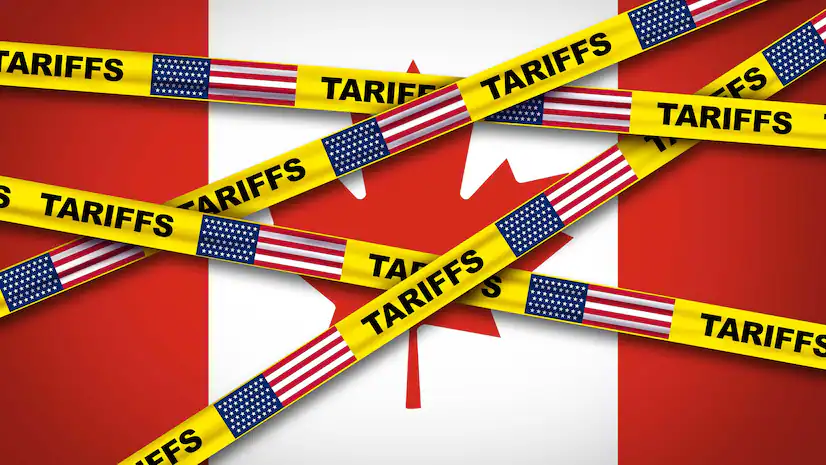Understanding Canada Tariffs and Their Impact on Trade
Canada’s tariffs play a pivotal role in shaping its trade relationships, especially with the United States and Mexico. This article delves into the complexities of Canada’s tariff policies, exploring their historical context, economic impact, and future implications. From the 2025 United States trade war to the intricacies of the United States–Mexico–Canada Agreement (USMCA), we uncover the nuances of Canada’s trade dynamics.
The Historical Context of Canada Tariffs
Canada’s tariff policies have evolved significantly since the 19th century, shaped by protectionist measures to foster domestic industries. The National Policy of 1879 imposed high tariffs to shield manufacturing, but this shifted with the 1988 Canada-U.S. Free Trade Agreement (CUSFTA), which dismantled most bilateral tariffs and set a precedent for later agreements like NAFTA. The early 2000s saw further liberalization under the WTO, but protectionism resurged in the 2020s amid global trade tensions. The 2025 trade war marked a stark reversal, as Canada reintroduced strategic tariffs in response to U.S. measures, echoing historical debates over economic sovereignty versus integration.
The 2025 Trade War with the United States
The 2025 trade war between Canada and the U.S. erupted over disputes surrounding green energy subsidies and agricultural protections. The U.S. imposed tariffs of up to 35% on Canadian steel, aluminum, and dairy, citing unfair competition. Canada retaliated with targeted tariffs on American ethanol, machinery, and consumer goods, escalating tensions. Immediate impacts included supply chain disruptions and a 5% drop in bilateral trade within months. The conflict strained USMCA relations, setting the stage for renegotiations discussed in the next chapter.
The Role of the USMCA in Modern Trade
The United States–Mexico–Canada Agreement (USMCA), implemented in 2020, reshaped North American trade dynamics by modernizing rules to reflect digital economies and labor standards. It replaced NAFTA, introducing stricter rules of origin for automotive trade, requiring 75% of vehicle components to be regionally sourced—up from 62.5%. This shift incentivized supply chain integration but raised production costs. The agreement also streamlined dispute resolution and eliminated tariffs on most goods, though agricultural protections remain. By balancing trade liberalization with localized production mandates, USMCA mitigates some tensions highlighted in the 2025 trade war while influencing Canada’s tariff-dependent industries.
Economic Impact of Tariffs on Canada
Tariffs have significant economic repercussions for Canada, influencing GDP growth, consumer prices, and key industries. By raising import costs, tariffs can reduce domestic consumption and slow economic expansion, particularly in trade-dependent sectors. The automotive industry, deeply integrated with U.S. supply chains, faces higher production costs, potentially reducing competitiveness. Meanwhile, energy exports may suffer from retaliatory tariffs, impacting revenue. Consumers often bear the brunt through inflated prices for goods. While tariffs can protect certain industries, their broader economic impact tends to be negative, disrupting trade flows and investment.
Canada-U.S. Trade Dynamics
The Canada-U.S. trade relationship is one of the world’s most robust, underpinned by USMCA and decades of economic integration. Key sectors like oil and steel face periodic tariff disputes, often driven by U.S. protectionist policies. Canada’s oil exports, primarily to the U.S., are vulnerable to shifting energy demands and cross-border pipeline politics. The automotive industry, deeply intertwined with U.S. supply chains, has been impacted by tariffs on aluminum and steel, raising production costs. Despite tensions, mutual reliance ensures negotiated resolutions, though trade imbalances persist.
Canada-Mexico Trade Relations
Canada and Mexico share a robust trade relationship, strengthened by their mutual integration into the USMCA (formerly NAFTA). Key sectors like automotive manufacturing and agriculture highlight their interdependence, with supply chains often spanning both nations. U.S. tariffs on steel and aluminum have indirectly affected Canada-Mexico trade, as both countries navigate retaliatory measures and shifting export strategies. Mexico is Canada’s third-largest trading partner, with bilateral trade exceeding $40 billion annually, emphasizing the need for coordinated policies to mitigate disruptions from external tariffs, particularly those imposed by the U.S.
Tariffs and Consumer Prices
Tariffs directly influence consumer prices in Canada by increasing the cost of imported goods. For instance, U.S. steel and aluminum tariffs imposed in 2018 led to higher prices for Canadian manufacturers, which were passed on to consumers in sectors like automotive and construction. Similarly, retaliatory tariffs on American products, such as whiskey and agricultural goods, raised retail prices. These measures disproportionately affect lower-income households, as essential goods become less affordable. Recent trade disputes highlight how tariffs disrupt supply chains, creating inflationary pressures that ripple through the economy. The political debate around tariffs often overlooks these real-world consequences for everyday Canadians.
The Political Landscape of Tariffs
Tariffs in Canada are often shaped by political agendas, with leaders leveraging them as tools for economic strategy or diplomatic pressure. Justin Trudeau has framed tariffs as protective measures for domestic industries, while Donald Trump used them aggressively during U.S.-Canada trade disputes, citing unfair competition. These policies reflect broader geopolitical tensions, such as the renegotiation of NAFTA into the USMCA. Political rhetoric often clashes with economic realities, as tariffs can escalate trade wars or be used to secure concessions. The interplay between national interests and global trade dynamics underscores the complexity of tariff decisions, influencing both alliances and market stability.
Future Projections for Canada’s Tariff Policies
Canada’s tariff policies are likely to evolve amid shifting global trade dynamics and ongoing negotiations, such as the Comprehensive and Progressive Agreement for Trans-Pacific Partnership (CPTPP) and USMCA. With increasing geopolitical tensions and a push for supply chain resilience, Canada may adjust tariffs to protect strategic sectors like clean energy and advanced manufacturing. Digital trade and carbon border adjustments could also influence future tariffs, aligning with climate goals. Businesses should monitor these trends, as policy shifts may impact competitiveness and access to key markets.
Strategies for Businesses Navigating Tariffs
To mitigate the impact of Canada’s tariffs, businesses should adopt proactive strategies. Diversification is key—exploring alternative suppliers or markets reduces dependency on tariff-affected goods. Companies should also invest in compliance automation tools to streamline tariff classification and documentation, minimizing errors and penalties. Leveraging free trade agreements (FTAs) like CUSMA can lower costs by qualifying for preferential rates. Additionally, businesses should engage in lobbying efforts or consult trade experts to stay ahead of policy shifts. These steps ensure resilience in a fluctuating trade landscape.

Conclusions
Canada’s tariffs are a double-edged sword, offering protection for domestic industries while risking trade relationships and economic stability. The 2025 trade war and USMCA underscore the delicate balance Canada must maintain. As global trade evolves, understanding these dynamics will be crucial for policymakers, businesses, and consumers alike.



